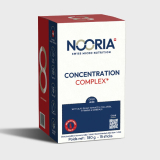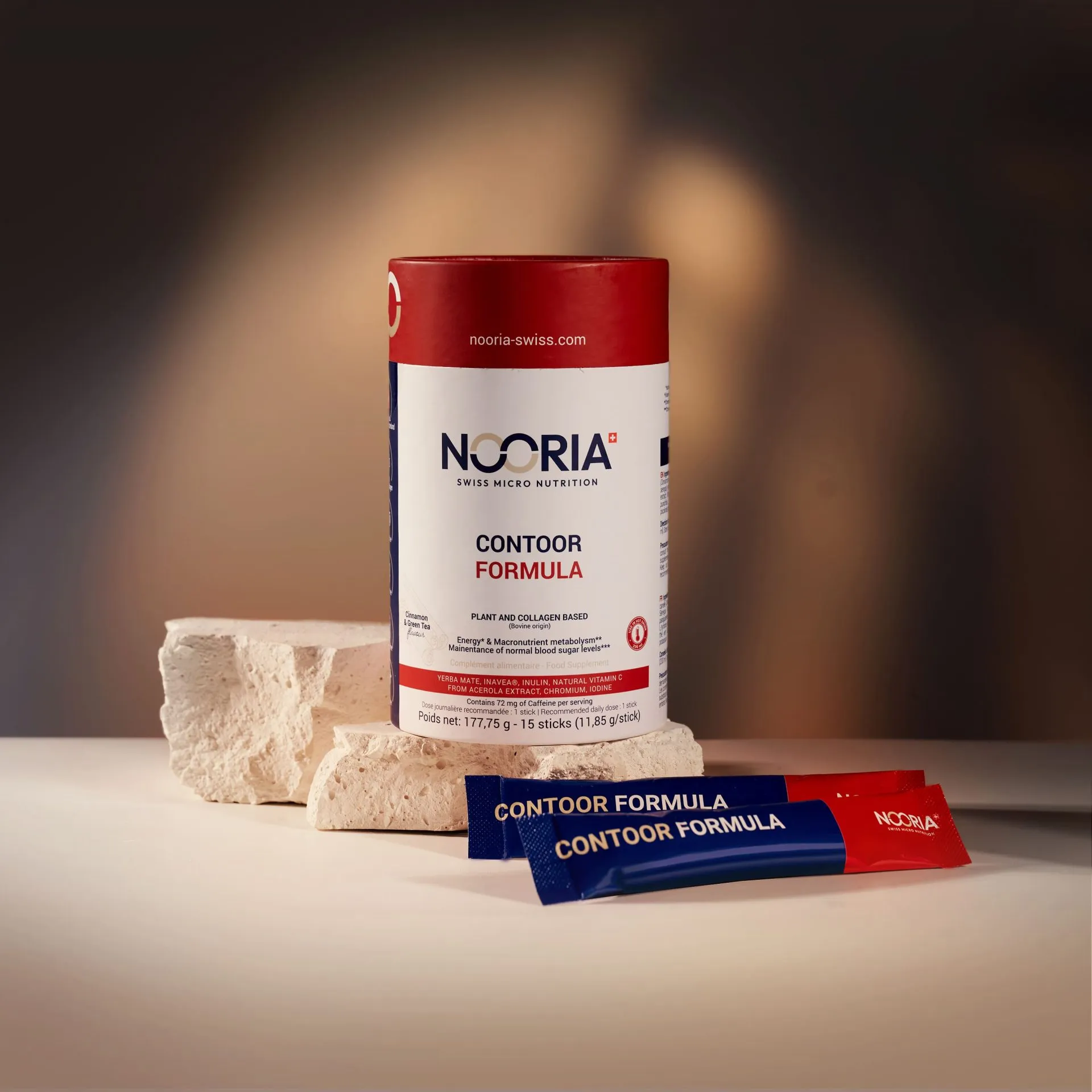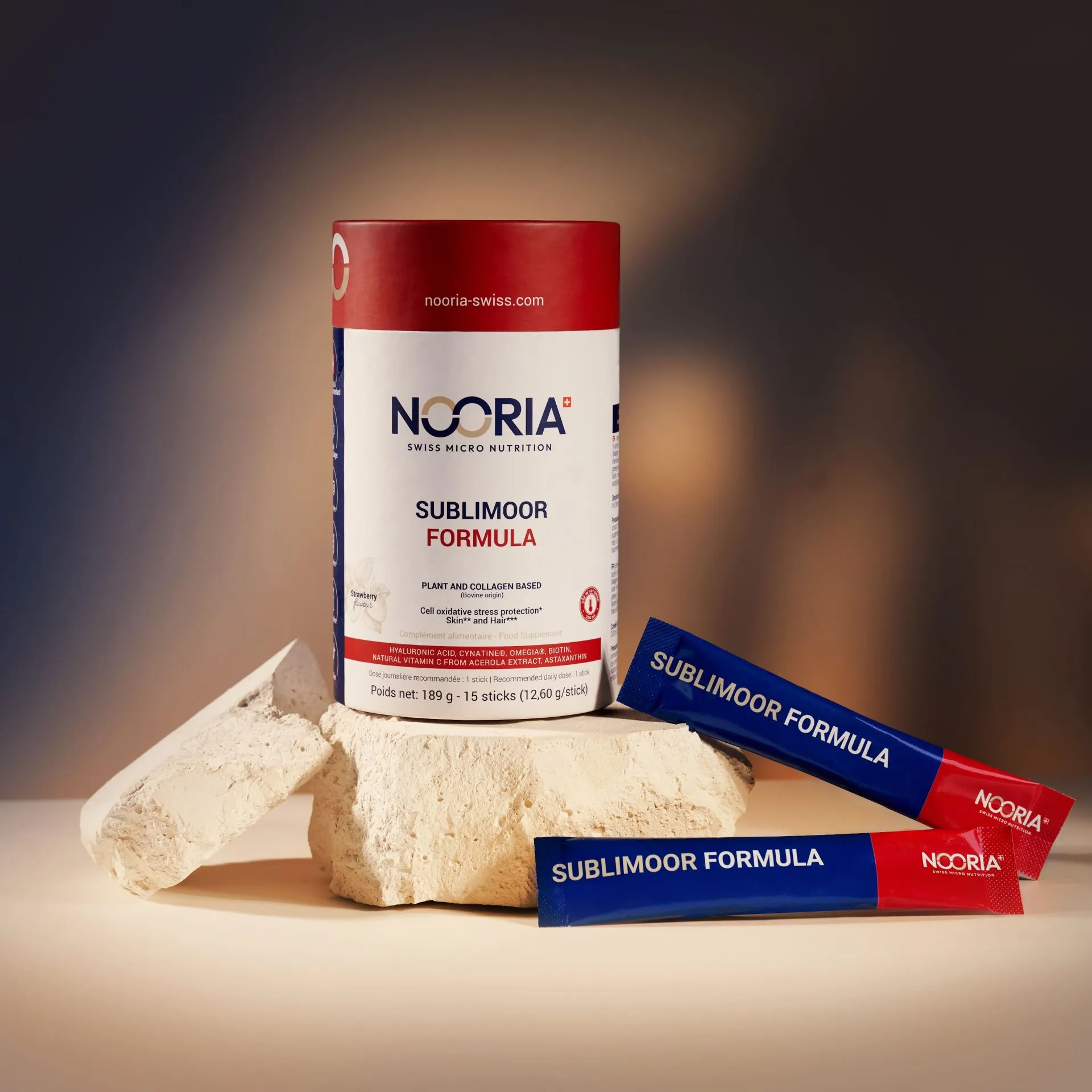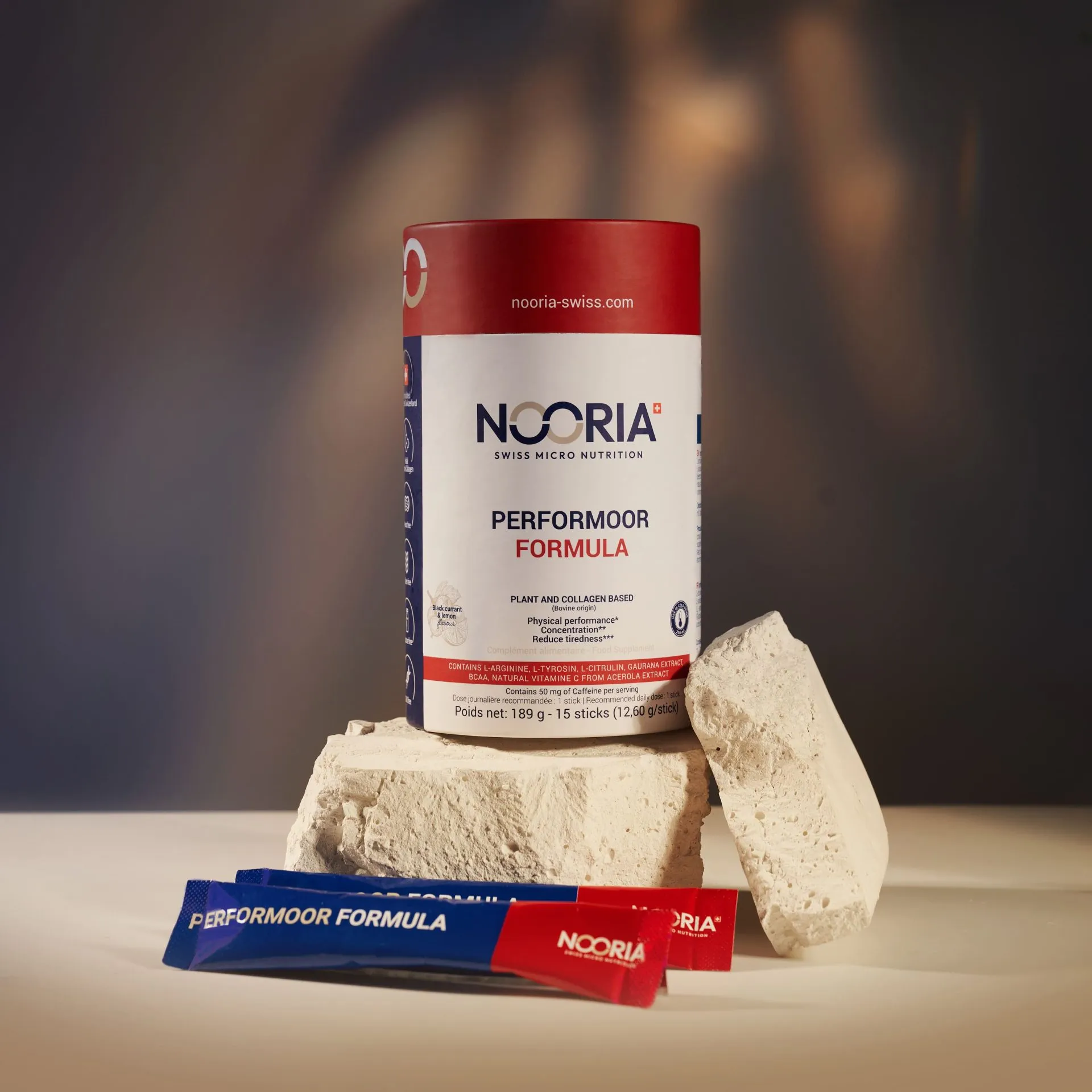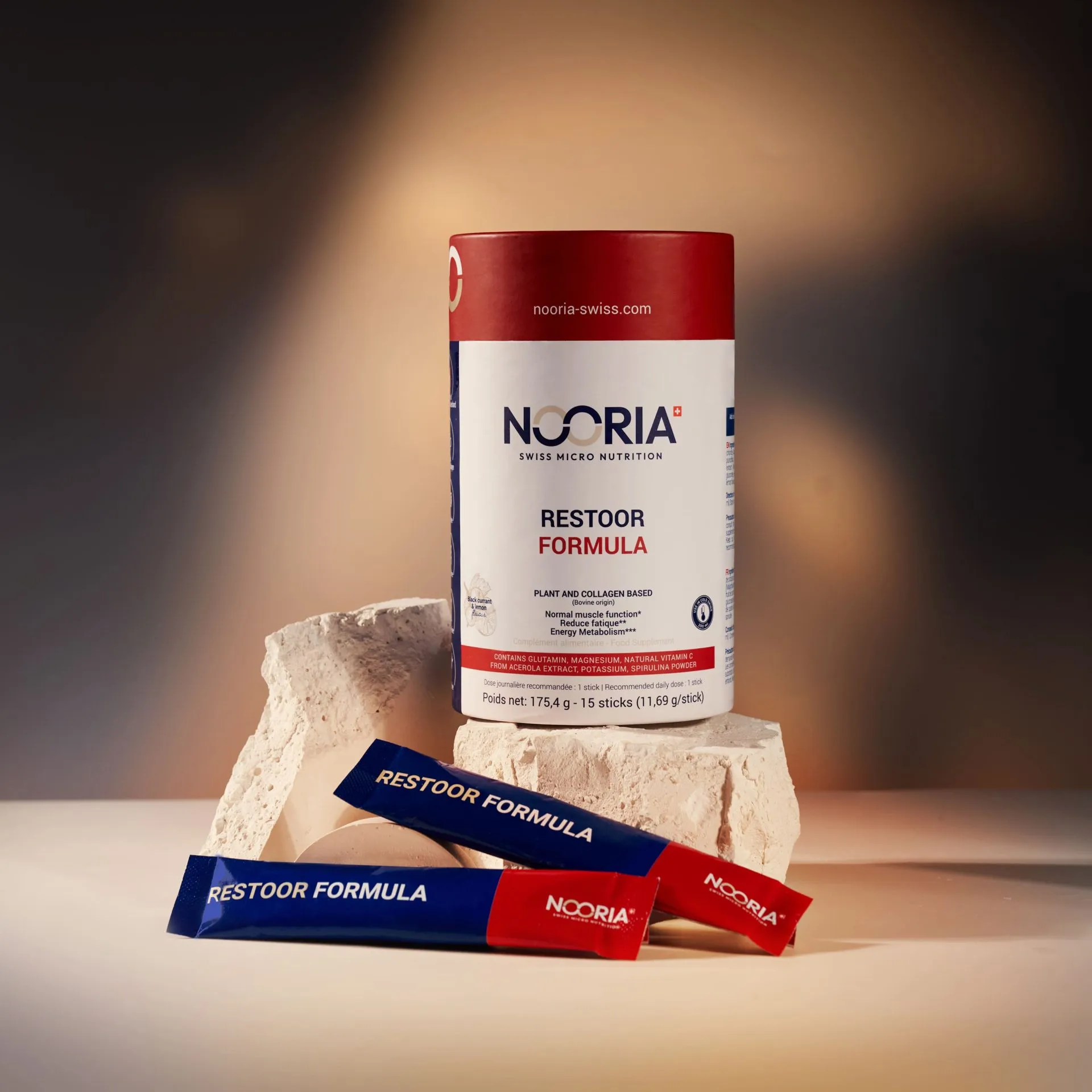From Anne-Sophie Bongain (Member of Nooria Scientific Advisory Board, Chemical Formulation Ingeneer)
published in February 2025

WHY COLLAGEN IS IMPORTANT ?
Collagen is a fibrillar protein that is ubiquitous in the human body. Produced naturally by the body, it gives cohesion to tissues and organs. Known for its anti-wrinkle properties, this protein has many other interesting uses. Find out more.
Rather than talking about collagen, we should all be talking about collagens, so that we can discover all the ‘collagen’ options we can find on the market, and their specificities.
Collagen is one of the most abundant proteins in many living organisms because it
plays a connective role in biological structures. It is also the most abundant protein in the
extracellular matrix (ECM). ECM is a non-cellular component within all tissues and organs and is a structural scaffold that can direct cell adhesion and migration, and regulate cellular growth and metabolism [1].
The loss or defect of collagen can cause skin aging and other diseases. The collagen treatments have demonstrated effective improvements in skin hydration, skin elasticity, in many clinical studies. Collagen therapy can reach good improvement and does not cause any serious adverse reactions. Collagen-based materials and products are the potential to be used in more applications, and they are the one of most important supplements for aging people [2].

WHAT YOU SHOULD KNOW ABOUT COLLAGEN?
There is several type of collagen. Collagen types I, II, and III are three collagen types used for supplements. Collagen type I is mainly found in marine collagen. Collagen type II is original from chicken collagen and bovine collagen. A mixture of collagen type I and type III can be obtained from porcine collagen and bovine collagen. So far, there are many collagen products on the market. The big market of collagen products indicates the significance of the effects of these products.
These animal sources contain several types of collagen: type I collagen (the most abundant in humans), type II, type III… There are no fewer than 28, all with their own benefits for the skin and the structure of connective tissue! [3].
An additional parameter needs to be controlled. This is the size of the collagen peptides. The size of the collagen peptides depends on the collagen hydrolysis process. Depending on their molecular size (which is measured in daltons), different collagens will not have the same absorption or the same composition.
Collagen peptides, which are hydrolyzed from natural collagen, have a high absorption rate and are used as a bioavailable food supplement without any side effects [4].
Improving skin quality, including hydration, elasticity, and visibility of wrinkles, is one of the best known benefits of collagen supplementation [5] but not the only one, as collagen is present in all the body’s support tissues.

WHY NOORIA COLLAGEN PROPOSAL IS UNIQUE
In order to select the best collagen option for its products, the Nooria team relied on the meta-analysis carried out in 2021 by the International Society of Dermatology [6].
The International Society of Dermatology selected 19 studies, with a total of 1,125 participants aged between 20 and 70 (95% women). This report showed favourable results for hydrolysed collagen (peptides) supplementation compared with placebo in terms of skin hydration, elasticity and wrinkles. According to the results, ingesting hydrolysed collagen (peptides) for 90 days is effective in reducing skin ageing, as it reduces wrinkles and improves skin elasticity and hydration [6].
In conclusion, Nooria’s collagen is derived from collagen renewable resources, and based on Swiss innovation collagen. In our Nooria Supplements, not only we use this collagen with 5000mg/stick at minimum, but we combine it with plant extracts, vitamins & minerals to boost it efficiency. In fact, in each stick, Nooria collagen is combined with Natural C vitamin, as C Vitamin is collagen Co-factor in the Body.

References
[1] Theocharis, A.D.; Skandalis, S.S.; Gialeli, C.; Karamanos, N.K. Extracellular matrix structure. Adv. Drug Deliv. Rev. 2016, 97, 4–27 link
[2]. Wang, H. A Review of the Effects of Collagen Treatment in Clinical Studies. Polymers 2021, 13, 3868. link
[3] Ricard-Blum S. The Collagen Family. Cold Spring Harb Perspect Biol. 2011 Jan; 3(1). link.
[4] Nemati M, Oveisi MR, Abdollahi H, Sabzevari O. Differentiation of bovine and porcine gelatins using principal component analysis. J Pharm Biomed Anal 2004;34:485-92. link
[5] Reilly DM, Lozano J. Skin collagen through the lifestages: importance for skin health and beauty. Plast Aesthet Res 2021;8:2. link
[6] Effects of hydrolyzed collagen supplementation on skin aging: a systematic review and meta-analysis link

